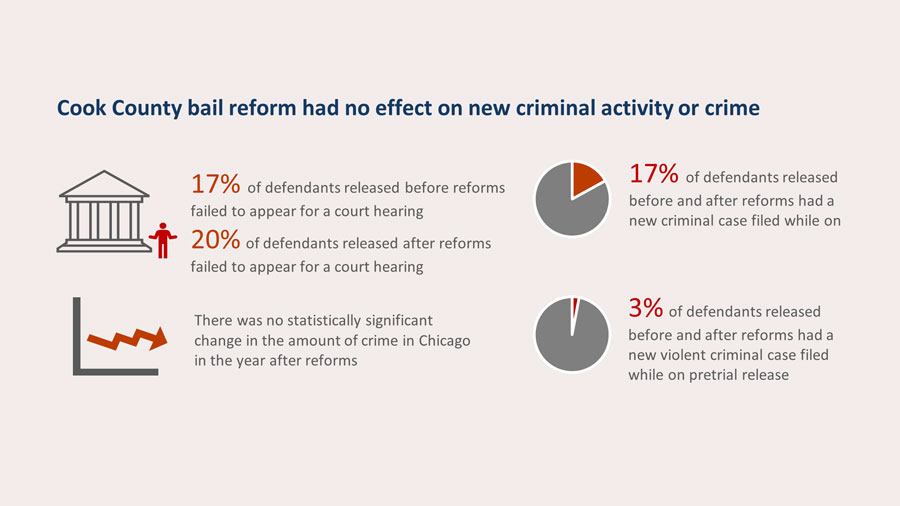
Ah, the joy of bail reform in New Jersey – it’s like a roller coaster ride that you never wanted to take, but somehow ended up on anyway. From the highs of release without having to empty your pockets, to the lows of potentially facing tougher consequences if you decide to skip out on your court date. But fear not, dear defendants, for we are here to explore the wild, unpredictable effects of bail reform on your life. So grab your popcorn and hold on tight, because we’re about to dive into this ride of justice – or lack thereof.
Pre-reform Bail System in New Jersey
Before the reform, the bail system in New Jersey was like a twisted game of Monopoly where getting out of jail required you to have a Get Out of Jail Free card – or, well, a LOT of money. It was as if the legal system believed that being able to afford bail was a superpower only a select few possessed. It was an unjust and downright laughable system that left many individuals stuck behind bars simply because they couldn’t afford to buy their freedom.
Imagine entering a courtroom and feeling like you’re in an episode of Shark Tank, where your freedom is on the line and the investors are the judges and lawyers determining your fate. The felt like a bad reality TV show – except the consequences were very, very real. You either had to pony up the cash or prepare to spend some quality time in the slammer.
For those unfortunate souls caught in the tangled web of the pre-reform bail system, it was like being a character in a Shakespearean tragedy where the odds were stacked against you from the start. The system was a cruel joke played on those who couldn’t cough up the dough, leaving them to languish in jail while the wealthy walked free without a care in the world.
Thankfully, the winds of change have swept through New Jersey, bringing a new era of fairness and equality to the bail system. No longer must individuals feel like they’re playing a rigged game of chance just to secure their freedom. The days of cash as king are over, and a brighter, more just future awaits those in need of bail assistance.
Changes in Bail Laws and Procedures
With recent , the legal system has become a bit like a game of musical chairs – you never know when the music will stop and you’ll be left standing.
One major change is the shift towards cashless bail options. Now, instead of having to scrounge up a pile of cash to secure your release, you may have the option to use assets like property or jewelry as collateral. Finally, your bling could be your ticket to freedom!
Another new development is the use of risk assessment tools to determine bail amounts. So, in addition to facing a judge, you may also have to contend with algorithms and statistical models. It’s like trying to outsmart a computer – hope you brushed up on your coding skills!
And let’s not forget about the rise of pretrial services, where defendants are monitored and supervised while awaiting trial. It’s like having a personal babysitter, except this one reports back to the court. Better not try to sneak out for late-night pizza!
Impact of Bail Reform on Pretrial Detention Rates
So, you wanna know about the , huh? Well, let me break it down for you in the most entertaining way possible.
First off, let’s talk about how bail reform has been shaking things up. With the new reforms in place, judges are taking a closer look at who actually needs to be locked up before their trial. This means fewer people are being held in pretrial detention just because they can’t afford to pay bail.
But hold your horses, we’re not out of the woods yet. Some folks are concerned that this new system might actually lead to an increase in crime rates. Without bail acting as a deterrent, will people be more likely to skip town before their trial? It’s like a real-life game of hide and seek, but with less fun and more legal consequences.
However, proponents of bail reform argue that it’s not all doom and gloom. By reducing pretrial detention rates, we’re not only saving taxpayer dollars but also preventing innocent people from being stuck behind bars. It’s a win-win situation, don’t you think?
Effect of Bail Reform on Minority Defendants
As we explore the impact of bail reform on minority defendants, it’s important to acknowledge the systemic inequalities that have plagued our justice system for far too long. One of the biggest changes brought about by bail reform is the shift towards considering the defendant’s risk assessment rather than their ability to pay bail. This is a huge win for minorities who have historically been at a disadvantage due to economic disparities.
With the new focus on risk assessment, judges are able to make more informed decisions about whether a defendant should be released or detained. This means that minority defendants who may have been unfairly held in jail simply because they couldn’t afford bail now have a better chance at being released. It’s a small step towards leveling the playing field in our justice system.
Additionally, bail reform has led to a decrease in pretrial detention rates for minority defendants. This is a significant development as pretrial detention can have devastating consequences on a defendant’s life, leading to job loss, family strain, and even a higher likelihood of being convicted. By reducing the reliance on bail, minority defendants are given a fairer chance at a just outcome in their case.
In conclusion, the cannot be understated. It’s a step in the right direction towards addressing the inequalities that have long plagued our justice system. While there is still much work to be done, bail reform represents a glimmer of hope for minorities who have been disproportionately impacted by our current system.
Outcomes of Bail Reform on Court Backlog
After implementing bail reform, the court backlog has seen some interesting outcomes. Let’s dive into some of the unexpected consequences:
1. Increased Efficiency: With fewer non-violent offenders being held in custody awaiting trial, courts have been able to process cases more quickly. Judges now have more time to focus on the more serious crimes, like stealing a cookie from the cookie jar.
2. Rise in Creative Excuses: With more defendants being released on their own recognizance, we’ve seen a surge in creative excuses for missing court dates. From “my cat ate my summons” to “I was abducted by aliens,” the creativity knows no bounds.
3. Adoption of Casual Attire: With less pressure to appear in court due to relaxed bail requirements, judges and lawyers have taken to wearing Hawaiian shirts to proceedings. Who said justice can’t be served with a side of piña colada?
Challenges and Criticisms of Bail Reform in New Jersey
One of the main challenges facing bail reform in New Jersey is the argument that it has led to an increase in crime rates. Critics of the reform point to instances where individuals released on bail have committed new offenses while awaiting trial. However, this criticism fails to acknowledge that the purpose of bail reform is to ensure that low-income individuals are not unfairly impacted by pretrial detention.
Another criticism of bail reform in New Jersey is the perceived lack of accountability for individuals who fail to appear in court. Critics argue that the reform has made it easier for defendants to skip out on their court dates without consequences. However, proponents of bail reform argue that the focus should be on addressing the root causes of why individuals fail to appear, such as lack of transportation or childcare, rather than punishing them.
Furthermore, some critics of bail reform in New Jersey argue that it has shifted the burden of proof from the defendant to the prosecution when it comes to determining pretrial release. They claim that this has led to an imbalance of power in the criminal justice system. However, supporters of bail reform argue that this shift is necessary to prevent individuals from being held in jail simply because they cannot afford bail.
FAQs
Why did New Jersey implement bail reform?
Well, it turns out New Jersey wasn’t a fan of the whole “innocent until proven guilty… if you can pay up” system. So they decided to shake things up with bail reform.
How has bail reform affected defendants in New Jersey?
Oh, you know, just a little thing called FREEDOM. No longer are defendants sitting in jail just because they can’t pony up the cash. It’s like Oprah was handing out “You get released! And you get released!” cards.
What are some of the benefits of bail reform for defendants?
Think of it like this: no more scrambling to gather bail money, no more worrying about losing your job while stuck in jail, and no more feeling like a second-class citizen just because you can’t afford bail. It’s a win-win for everyone (well, except maybe bail bondsmen).
Are there any drawbacks to bail reform in New Jersey?
Sure, there may be a few bumps in the road. Some people worry about defendants not showing up to court if they’re not financially incentivized, but hey, maybe the justice system can trust people to do the right thing without having to cough up some dough.
How can defendants navigate the new bail system in New Jersey?
It’s simple really - just show up to court, don’t commit any new crimes, and follow the rules. It’s like being a responsible adult, but without the stress of having to deal with a hefty bail amount looming over your head. Easy peasy!
In Conclusion: A Bail-larious Take on NJ Bail Reform
As we’ve seen, the effects of bail reform on New Jersey defendants are nothing short of…well, revolutionary! From freeing individuals from the financial burden of bail to reducing pretrial detention rates, it’s clear that the system is undergoing some much-needed changes. So next time you find yourself in a sticky legal situation in the Garden State, just remember: the only thing you’ll be posting is a hilarious bail meme on Instagram! #BailReformGoals.










